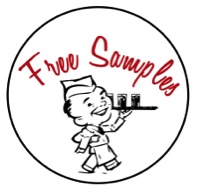In-store sampling is one of the quickest and most effective means of promotion. It lets shoppers know about the company’s products and also generates very important market information from consumers. By giving free samples, a company gets the chance to grab the interest of the consumer in exchange for an opportunity to get much needed feedback. This is a very important marketing tool, and should be used with care to avoid reversed-effects. Conducting this correctly is vital, and below are 5 helpful tips on how to set up a successful in-store sampling exercise.
Tip 1: The First Impression.
By and large, most supermarkets place sampling promotions right at the entrance section. Thus, as the shopper walks into the outlet and picks a shopping trolley; he/she will most likely pass by the promotions section. This permits a very short time to get the shopper’s attention. Within this limited space of time; the set-up, the product on display and promoter (sales agent) should catch the eye of the customer long enough to allow an approach to be made. A well-groomed and friendly promoter, with a neat and tidy display will have a much better chance of getting a shopper’s interest.
Tip 2: Conveying the message to the shopper
A promoter who is trained on exactly what to say, and how to say it, will be much more confident after approaching a customer. The pleasant and well informed promoter should then keep the conversation friendly yet formal, and still manage to fully tell of the product’s offer. If the promotion involves giving out a free sample, it should be in good condition, and packaged as hygienically as possible if it is to be eaten. A leaflet informing the shopper of the product is definitely a plus and will act as a reminder as the customer goes around the supermarket.
Tip 3: Location! Location! Location!
While one promoter is located at the entrance doing the sampling, another should be in the store’s aisles, right next to the product. This will prompt the shopper to remember about the sample he/she had tried at the entrance and be more at ease to be approached by the second promoter. If the correct impression was left by the first promoter then it should be easier to convince the buyer to buy the product.
Tip 4: Data Collection
The fourth element is data collection. With the focus being on the ‘tasting/sampling experience’; the shopper should be kept away from filling questionnaires and writing down their personal details. Unless the shopper volunteers to do so, the promoter should focus on deriving as much information from the shopper during the conversation; and then record it later after the sampling is done.
Tip 5: Data Analysis
Last but not least, data analysis. This is the most important step of the exercise since it allows the company to get reviews and reactions from the consumers. It allows the company to get into the minds of shopper’s and customers and know where to improve and where to direct their resources. Simplified methods of statistical analysis should be applied to show the interested parties of the impact and responses from the sampling exercise.
These five tips will ensure that the shopper is kept in their comfort zone throughout the sampling exercise and get to leave with a better impression about the product and the company, regardless of whether a purchase is made or not. In addition, these tips will help the company to benefit as much as possible from spending money on product sampling.
Patrick Gituma – Marketing Operations Executive


